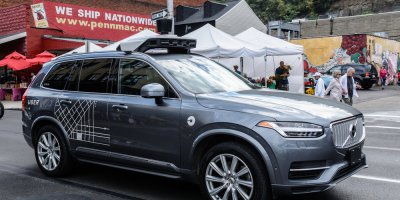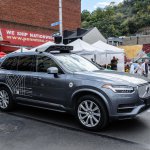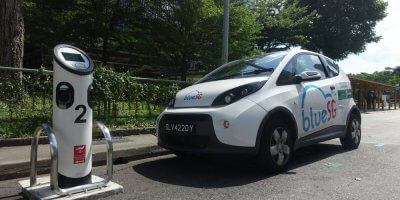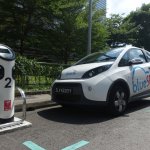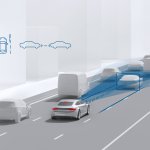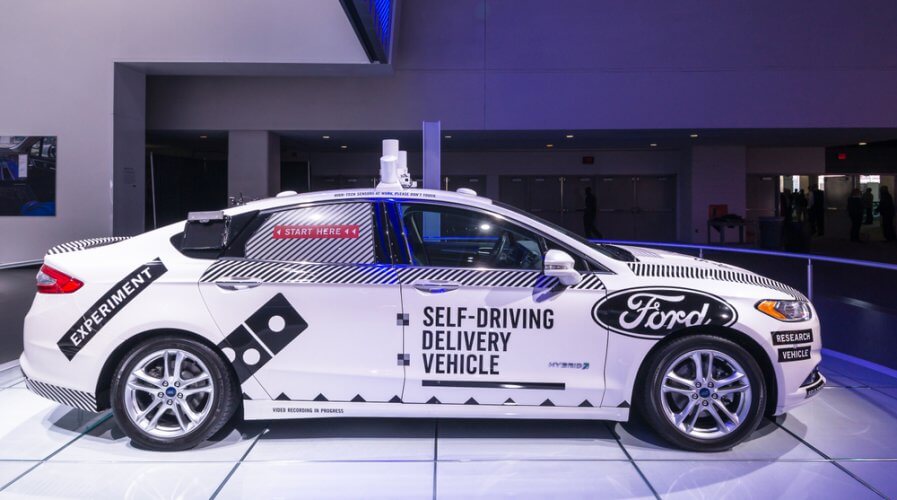
Autonomous vehicles set to be fastest-growing automotive sector with more than 11m sales by 2033. Source: Shutterstock
Think tanks make interesting forecasts about autonomous vehicles
LEADING automotive companies have made significant investments to bring SAE level 5, 100 percent autonomous vehicles to life.
Nissan forged a partnership with Nasa, Daimler joined forces with Bosch, and Audi extended its relationship with NVIDIA — all with a view to improve autonomous vehicles and build more intelligent, self-driving vehicles.
Although most haven’t been able to bring a finished product to market, commercially and at scale as yet, GlobalData‘s latest study creates hope for a more autonomous future.
The think tank forecasts that autonomous vehicles will be the fastest-growing automotive sector with sales crossing more than 11 million units by 2033 with a healthy compound annual growth rate (CAGR) of 76.09 percent to 2033.
“The simultaneous rise of electric vehicles, autonomous driving, onboard connectivity, and mobility-as-a-service has left traditional original equipment manufacturers (OEMs) and suppliers scrambling to adjust their strategies,” said GlobalData Automotive Analyst Mike Vousden.
It’s interesting to note that the think tank doesn’t see level 5 autonomous vehicles as the ultimate deal.
GlobalData’s forecasts suggest that while SAE level 5 autonomous vehicles will grow the fastest at a CAGR of 73.30 percent to 2033, it will be closely followed by SAE level 4 autonomous vehicles at a growth rate of 68.57 percent over the same period.

A dive into Frost & Sullivan‘s study on the global autonomous vehicles market chalks out an interesting timeline for the transition into autonomous vehicles.
Last year, Audi created a level 3 autonomous vehicle, and a level 4 vehicle is expected to be ready by 2021. However, Frost & Sullivan feels getting to level 5 will be something the market will only see in 2030 and beyond.
The think tank’s study also pointed out that the market is moving from an “ownership” model driven by status or need, to a “usership” model that is built on needs but focuses on keeping costs low (using a pay-as-you-go model).
A big part of Frost & Sullivan’s study talks about the impact of autonomous vehicles on future vehicle designs.
It points out that augmented reality (AR) and infotainment will play a big role in tomorrow’s vehicles — as passengers will not be worried about driving themselves anymore.
The study says that cars might feature augmented interactive games using the physical world seen through the windshield and include high-definition HUDs and AD displays that would be responsive to touch and other inputs.
This is probably why Lyft acquired an AR startup for US$72 million soon after it unveiled a self-driving car last year. While still in its nascent stages, the company sees AR as a way to deliver intelligent AR-powered maps to passengers in the future.
In terms of infotainment, aside from hardware changes, features such as internet browsing, social media, apps, video calls, entertainment are expected to play a bigger role in tomorrow’s vehicles.
The idea of tomorrow’s in-car infotainment system really excites professionals in the advertising world who feel that these systems will provide interesting opportunities to target the right audience, at the right time, in the right place, and in the right way.
UC Berkeley Prof Ikhlaq Sidhu recently toyed with the idea of free personal transport through ads in tomorrow’s world driven by autonomous vehicles.
In it, he said that by 2030, passengers might be able to enjoy “free rides in driverless cars by watching ads” and feels that the idea has the potential to go mainstream, with massive industry consolidations.
The reality is that we still don’t know the realities of what we might be able to achieve in terms of mobility as a result of personal communications but the future is clearly very interesting for everyone.
Using a bit of creativity, autonomous vehicles might change more than just mobility for megacities such as Singapore, Sydney, Kuala Lumpur, and Hong Kong.
There’s plenty of opportunity and businesses need to decide how they want to drive the future by pioneering not just new inventions but also new and interesting innovations.
READ MORE
- Safer Automation: How Sophic and Firmus Succeeded in Malaysia with MDEC’s Support
- Privilege granted, not gained: Intelligent authorization for enhanced infrastructure productivity
- Low-Code produces the Proof-of-Possibilities
- New Wearables Enable Staff to Work Faster and Safer
- Experts weigh in on Oracle’s departure from adland

